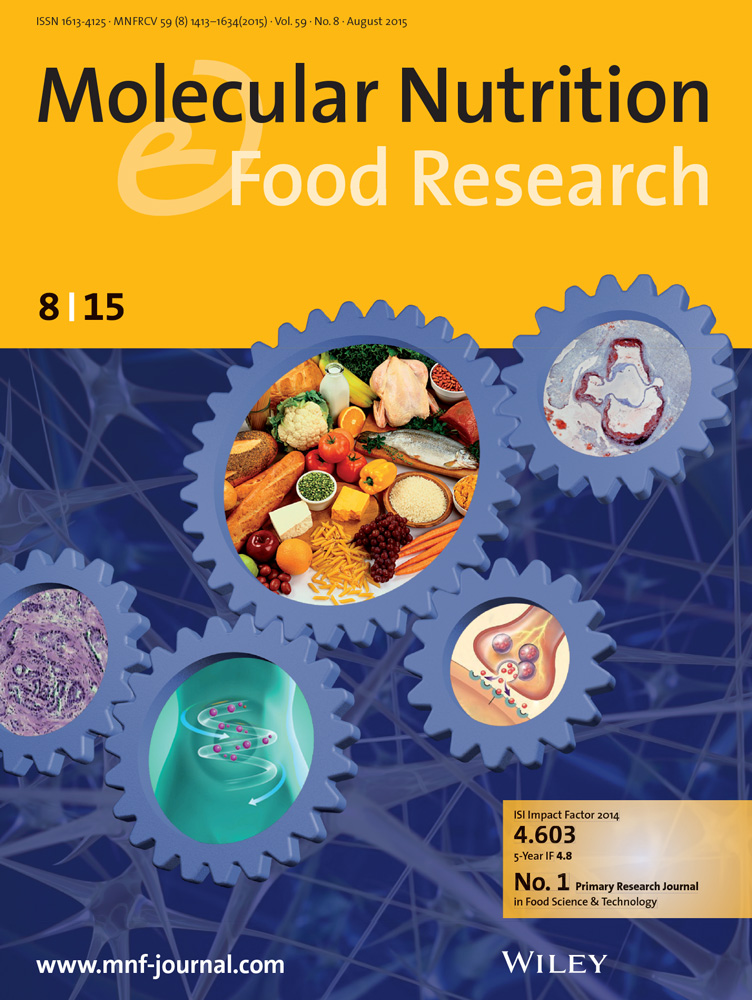Serum Lipidomic Signatures Mediate the Association Between Coarse Grain Preference and Central Obesity in Adults With Normal Weight and High Wheat Intake
IF 4.5
2区 农林科学
Q1 FOOD SCIENCE & TECHNOLOGY
引用次数: 0
Abstract
Little is known about the association between grain preference andabdominal fat accumulation, and mediating roles of circulating lipidomicsignatures. We quantified 1245 circulating lipids in 150 normal-weight centralobesity (NWCO) cases and 150 controls using targeted lipidomics. Grainpreference was determined by the highest intake frequency of grains (whiterice, wheat, or coarse grain). In our participants with high wheat intakefrequency, preferring coarse grain over rice was associated with a 60% lowerrisk of NWCO. Of the 585 lipids showing opposing associations with white riceand coarse grains, 46 were significantly linked to either (p < 0.05), predominantly alkylacyl phospholipids (PE-Os; n < 9) and alkenylacylphospholipids (PE-Ps; nx = 7). Network analysis identified a module primarilycomposed of PE-Os and PE-Ps, which was positively associated with coarse grain (p = 0.014). Another module, mainly consisting of triacylglycerols (TGs), was associatedwith white rice (p = 0.003) and mediated the association between white rice(mediation proportion: 20.30%; p = 0.027) or coarse grain preference (11.43%; p = 0.040) and NWCO. Specific lipids, such as TG(8:0_16:0_16:0) and TG(8:0_14:0_18:0), exhibited notable mediation effects. In normal-weight individuals with highwheat intake frequency, preferring coarse grain was inversely associated with NWCO, mediated by specific lipidomic signatures.

正常体重和高小麦摄入量成人的血清脂质组学特征介导粗粮偏好与中心性肥胖之间的关系
关于谷物偏好与腹部脂肪积累之间的关系以及循环脂质组学特征的中介作用,我们知之甚少。我们使用靶向脂质组学对150例正常体重中心性肥胖(NWCO)患者和150例对照者的1245种循环脂质进行了定量分析。谷物偏好由谷物(白粮、小麦或粗粮)的最高摄入频率决定。在我们的高小麦摄入频率的参与者中,更喜欢粗粮而不是大米与NWCO风险降低60%相关。在与白米和粗粮相反的585种脂质中,46种与其中任何一种显著相关(p <;0.05),主要是烷基酰磷脂(pe - o;n & lt;9)和烯基酰磷脂(PE-Ps;nx = 7)。网络分析发现pe - o和PE-Ps主要组成一个模块,与粗粒呈正相关(p = 0.014)。另一个模块主要由三酰基甘油(TGs)组成,与白米相关(p = 0.003),并介导白米之间的关联(中介比例:20.30%;P = 0.027)或粗粮偏好(11.43%;p = 0.040)和NWCO。特定脂质如TG(8:0_16:0_16:0)和TG(8:0_14:0_18:0)表现出显著的中介作用。在高小麦摄入频率的正常体重个体中,偏爱粗粮与NWCO呈负相关,这是由特定的脂质组学特征介导的。
本文章由计算机程序翻译,如有差异,请以英文原文为准。
求助全文
约1分钟内获得全文
求助全文
来源期刊

Molecular Nutrition & Food Research
工程技术-食品科技
CiteScore
8.70
自引率
1.90%
发文量
250
审稿时长
1.7 months
期刊介绍:
Molecular Nutrition & Food Research is a primary research journal devoted to health, safety and all aspects of molecular nutrition such as nutritional biochemistry, nutrigenomics and metabolomics aiming to link the information arising from related disciplines:
Bioactivity: Nutritional and medical effects of food constituents including bioavailability and kinetics.
Immunology: Understanding the interactions of food and the immune system.
Microbiology: Food spoilage, food pathogens, chemical and physical approaches of fermented foods and novel microbial processes.
Chemistry: Isolation and analysis of bioactive food ingredients while considering environmental aspects.
 求助内容:
求助内容: 应助结果提醒方式:
应助结果提醒方式:


